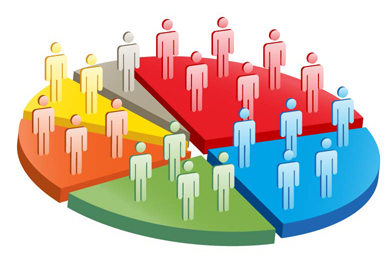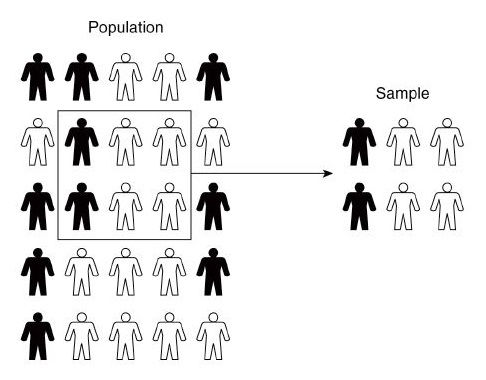Fiscal policy refers to the guiding
principles of the financial work which are constituted by the state
based on political, economic and social development tasks under a
certain period. Its purpose is to regulate aggregate demand through
government’s spending and tax policies. On the one hand, an increase in
government spending will stimulate aggregate demand and increase the
national income. Correspondingly, a decrease will depress aggregate
demand and reduce national income.
On the other hand, a tax is a kind of contraction strength to national
income. Therefore, the aggregate demand and the national income will be
restrained though increasing government revenue. And they will be
increased due to reducing in government revenue as well. The fiscal
policy with a distinct class character is formulated by the state,
represents the will and interests of the ruling class, and is subject to
a certain level of development of social productive forces and economic
relations. The state fiscal policy is an integral part of overall
economic policy, and is closely linked with the other economic policies.
In fact, the development and implementation of fiscal policy must be
cooperated with the financial policy, industrial policy and income
distribution policy and other economic policy.
The important role played by the fiscal policy in a developing economy can be explained through :
- Fiscal policy during inflation,
- Fiscal policy during depression,
- Fiscal policy and unemployment,
- Fiscal policy and income inequalities and
- Fiscal policy and economic growth.
Fiscal Policy during Inflation
Inflation is a period in which the purchasing power with, the people in the economy is high. The first step to curb inflation
is to control the purchasing power with the people. This can be done
using all the tools of fiscal policy. For instance, during inflation,
since the private expenditure is high the government should bring down
the public expenditure so that, to that extent the income generation
will be controlled. Alternatively, the government can increase the
existing tax rates or impose new taxes. This will have the effect of
taking away the purchasing power from the rich and well-to-do people
thereby curbing the consumption expenditure. The tax revenue will then
be used for public expenditure
purposes which will also be low during inflation. Hence, there will be
effective control of money supply in the economy. Another way in which
the fiscal authorities can function is to indulge in public borrowing.
The government may start borrowing from the people in large scale so
that the disposable income with the people will be reduced bringing down
the demand and prices. If voluntary lending is not effective, then the
government may resort to involuntary lending or compulsory saving by the
people. Through its debt management policy also the fiscal authorities
can control inflation. The anti-inflation debt management requires the
retirement or payment of bank-held securities or debts through budgetary
surplus. But this is very difficult in practice as in a developing
country the government cannot have budgetary surplus.
Fiscal Policy during Depression
Depression
is a period characterized by low income, low employment and low
consumption. Fiscal policy should change this situation. The government
must adopt deficit budget
in order to increase the income stream in the economy through increased
injection of fresh purchasing power into the economy. Secondly, the
government must encourage consumption and investment and for this
purpose the taxation should be brought down. Liberalized corporate tax
policy will also help to increase the corporate expenditure giving the
necessary thrust for the revival of economic activity. Public
expenditure during this period must be increased. The government can
achieve this either through pump priming or compensatory spending.
Pump priming refers to the initiation of investment activity by the
government through its expenditure on public projects which will be
followed up by the increased private investment. Compensatory spending
is resorted to when the private investment is not adequate enough. Then
the government also injects public investment through public projects.
Public debt policy can be suitably modified to fight against depression.
The government should borrow more from the rich people and spend this
amount in large scale on public works, and social security projects. All
these steps will help to protect the economy and enable it to recover
from depression.
Fiscal Policy and Unemployment
Fiscal
policy plays a vital role in generating employment opportunities in the
developing countries. In a developing economy, it should aim at solving
the problem of both cyclical unemployment and disguised unemployment.
While the former is of temporary nature, the latter has the
snow-balling effect. The latter refers to a situation in which more than
the required number of people are employed in a job. In other words, by
reducing the excess of labor from that job, the productivity or
production will not be affected. Hence, it has been found that fiscal
policy alone cannot solve this problem of unemployment in a developing
economy. It has to be coupled with monetary policy. For instance, during
inflationary period, the government should adopt surplus budget, along
with hard money policy, while during depression, deficit budget should
be combined with cheap money policy.
Fiscal Policy and Income Inequalities
The role of fiscal policy in removing income inequalities in a developing economy cannot be exaggerated. With public expenditure and taxation,
the government can very easily achieve income equality. The government
should devise its public expenditure scheme by focusing on the poor and
down-trodden people in the society. It may provide cheap food, cheap
cloth, subsidized housing, free medical aid, free education, etc., to
the poor people thereby raising their standard of living. For this
purpose, the government should raise funds by imposing taxes on the rich
people so as to bring down their purchasing power. It may completely or
partially relieve the poor people from the tax net. This has the effect
of-taking away as much as possible from the rich people and spending on
poor people. It may also resort to large dose of indirect taxes so as
to make the rich bear the burden as the poor will be paying such taxes
only if they spend on items on which the government has imposed heavy
indirect taxes. Therefore, taxation and public expenditure are the two very useful instruments of fiscal policy which can bring about the income equality in a developing economy.
Fiscal Policy and Economic Growth
Economic growth calls for the application of all the tools of fiscal policy.
In developing economy, there may be no shortage of real or physical
resources, but there may be a severe shortage of financial resources
which are required to utilize the physical resources. The object of
fiscal authorities should be to mobilize much funds as possible so as to
carry out large scale public projects. A very effective method of
mobilizing financial resources is taxation. The government can resort to
both the direct as well as indirect taxes so as to generate as much
funds as possible from all those who have the ability to pay. Different
type of direct taxes and indirect taxes
may be levied to cover every section of the population. There can be
specific taxes to curb certain consumption activities. Another
instrument available is public debt. Apart from the
voluntary lending schemes the government should also devise schemes to
encourage compulsory savings. Resources mobilized in this manner should
be spent in such a way that the infrastructural facilities are
strengthened first. This should be followed by the expenditure on growth
oriented industries and other related activities. Care should be taken
to avoid creating or widening sectoral imbalance so that the benefits of
growth will be shared by all the sectors in the economy. Government
must use its planning machinery to identify the right priorities so that
the hard mobilized funds are utilized in the best way possible. In this
process now-a-days the governments also resort to deficit financing. It is considered as a means of financing economic development. But too much reliance on deficit financing will also be dangerous. However, fiscal policy can play a vital role in helping to achieve a rapid economic growth.



